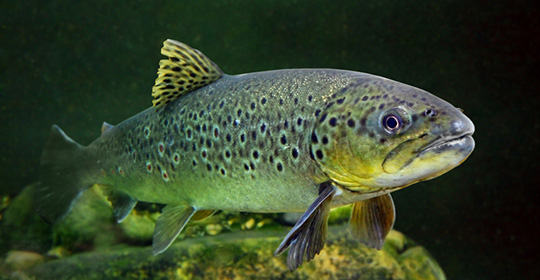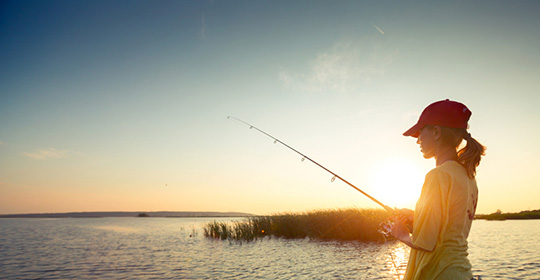5 Tips for Winter Trout Fishing in the Great Lakes
By Debbie Hanson
Dec 12, 2022
List of tips for winter trout fishing in the Great Lakes. Finding fishing spots for lake trout, best lures to use for jigging, trolling tips for lake trout
The bays of the Great Lakes are known for excellent winter trout fishing. While there aren’t many freshwater fish species that stay active during the coldest months of the year, lake trout are an exception. Lake trout fishing in winter can be very productive since this member of the Salmonidae family prefers water temperatures that range between 40 and 50 degrees.
When fishing for lake trout, the key is fishing at the right depths. In Lake Superior, for example, lake trout often inhabit waters that are 300 to 600 feet deep but can also be as shallow as 10 to 80 feet if there is a deep drop-off nearby. Many anglers fish through the ice with jigging spoons, but some troll (during mild winters in open water conditions) using lead core fishing line to present offerings to lake trout at optimal depth ranges.
Winter Trout Fishing Tips
Winter lake trout fishing in the Great Lakes generally means fishing through the ice in deep water bays using jigging spoons, but mild winters often mean there are open water opportunities for trolling as well.
Check out these five winter trout fishing tips to help you pick the best techniques and artificial lures.
1. Where to Fish for Lake Trout During Winter
Use your electronics to find structure where baitfish and gamefish will concentrate. The best winter trout fishing in lakes is often near underwater points with boulders, around submerged humps or reefs, saddles of shallow water between islands, around prominent rock walls, and near channels.

2. Get a Heavy Action Jigging Rod and Reel Set-Up
You’ll want to use a heavy-action jigging rod that has plenty of backbone to give you the torque you’ll need to fish with big lures and land lake trout from the depths. Pair the heavy action rod with a quality reel that won’t lock up in freezing temperatures and spool it with 10 to 12-pound braided line.
3. Use Jigging Spoons for Winter Trout Fishing
When ice fishing, jigging spoons often produce more bites then live bait due to the amount of flash and action the spoons create. Jigging spoons that range from ½ to ¾ ounce are some of the best artificial lures to use when targeting lake trout through the ice.
4. Keep Your Line Tight When Jigging
When fishing with jigging spoons, use a large sweeping action and then follow the spoon on the drop with the tip of your jigging rod. It’s important to always keep your line tight because lake trout will often hit the spoon on the upsweep. If you have too much slack in your line, you won’t feel the bite and may not get a good hookset.

5. Troll with Lead Core Fishing Line
Lead core fishing line is often used by anglers when trolling for lake trout because it’s marked with different colors that help to indicate the depth of your lure. Lead core lines have become popular because they are easy to use and get lures down deep without the need for downriggers or heavy weights. When winter trout fishing with lead core line, troll at slow to medium speeds (1.5 to 2 mph) using spinners, spoons, or jointed minnow lures.
Can you trout fish in winter? Now you know the answer to this question is, “absolutely!” If you want to switch it up from freshwater fishing for lake trout to saltwater fishing in coastal estuaries from Maryland to Florida, you can also try winter speckled trout fishing.









